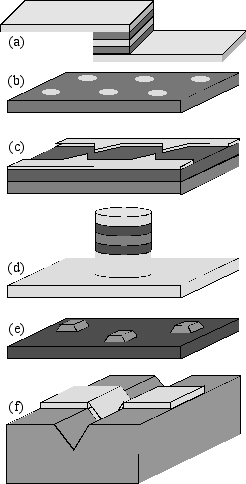What is a Quantum Dot?

Confinement of few electrons:
Quantum Dots (QDs) are solid state structures made of semiconductors or metals that confine a countable, small number of electrons into a small space. The confinement of electrons is achieved by the placement of some insulating material(s) around a central, well conducting region. If the insulation of the QD is strong enough and if the QD is small enough quantum mechanical effects due to the discrete electron charge and/or discrete electron energies can be observed macroscopically. QDs have therefore also been called artificial atoms. Neighboring, weakly coupled QDs have been called artificial molecules.
Critical Energies:
Quantum dots used in electron transport experiments are typically characterized by energies needed to add a single enelctron. The device arrangement has to be such that the energy needed to add a single electron to the dot is large compared to the thermal environment energy kT. This electron addition energy (E) can be understood to consist of two parts%: &Mac183; Charging energy (U): the potential energy needed to overcome the electrostatic repulsion from the other electrons in the dot. &Mac183; Quantization energy (delta E): the energy difference between the last filled and the next available orbital. QDs can therefore be viewed as artificial atoms. They represent the ultimate limit of scaled solid state devices.
Turn a problem into a virtue:
The small number of carriers in the device is in contrast to standard semiconductor devices, where hundreds of thousands of electrons are streaming through a device to establish a particular state of the system. QD device and circuit concepts do not fight but utilize the discreteness of the electron charge. They offer a possible breakthrough technology for devices and circuits.
Figure Caption: Various quantum dot implementations. (a) metal and metal oxide systems patterned by lithography. (b) metallic dots out of chemical suspensions. (c) lateral quantum dots through electrical gating of heterostructures. (d) vertical quantum dots through wet etching of quantum well structures. (e) pyramidal quantum dots through self-assembled growth. (f) trench quantum wire. More details on quantum dot implementations can be found on another page.
